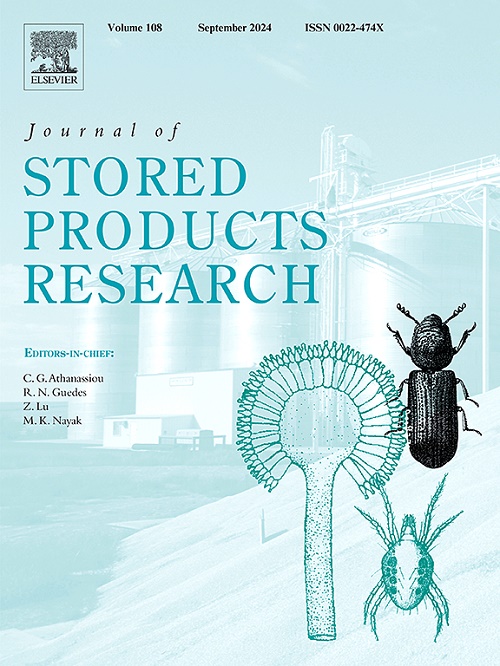Postharvest plasma treatment of Barhi dates: Reducing pesticide residue while preserving nutritional value
IF 2.7
2区 农林科学
Q1 ENTOMOLOGY
引用次数: 0
Abstract
Pesticide residues are available in a broad range of fruits, vegetables, and foods which leave harmful effects on health and environmental sustainability. Most agricultural products exposed to pesticides are marketed shortly after spraying. Palm growers widely use Abamectin and Fenpyroximate to control spider mites. After spraying, some date cultivars such as Barhi date are mostly used as fresh fruit by the consumer without passing the pre-harvest interval (PHI). The efficacy of Gliding Arc Discharge Plasma (GADP) on the degradation of Abamectin and Fenpyroximate pesticides was investigated. The GADP irradiation treatment included 0, 30, 60, 90, and 120s irradiation times applied on the surface of Barhi date fruits sprayed with Abamectin and Fenpyroximate at three different concentrations. The amount of mineral elements, total carbohydrate content, pH, microbial load, Abamectin and Fenpyroximate residue, and optical emission spectroscopy (OES) of plasma were measured. The ANOVA indicated that the impact of the irradiation times was significant on the residue amount of the pesticides in the Khalal stage. The potassium content of Barhi date fruit increased after GADP treatment. Although there were few alterations in the levels of P, Mg, total carbohydrate, and pH. Results show that the microbial load decreased significantly after plasma treatment whilst the lowest microbial load belongs to 120s treatment. Results achieved the largest degradation efficiency of pesticides at 1 ml/L, up to 89.4% and 89.3%, respectively during 120s GADP treatment. Also, the results showed that the degradation efficiency increased with an increase in the treatment time. This study demonstrates effective pesticide degradation in the Barhi date Khalal stage while meeting the Maximum Residue Limit (MRL) criteria. Thus, cold plasma technology presents a promising approach to enhance food safety through effective pesticide degradation on fruit surfaces whilst preserving the fruits' essential mineral content, quality, and extending their shelf life by reducing microbial contamination.
求助全文
约1分钟内获得全文
求助全文
来源期刊
CiteScore
5.70
自引率
18.50%
发文量
112
审稿时长
45 days
期刊介绍:
The Journal of Stored Products Research provides an international medium for the publication of both reviews and original results from laboratory and field studies on the preservation and safety of stored products, notably food stocks, covering storage-related problems from the producer through the supply chain to the consumer. Stored products are characterised by having relatively low moisture content and include raw and semi-processed foods, animal feedstuffs, and a range of other durable items, including materials such as clothing or museum artefacts.

 求助内容:
求助内容: 应助结果提醒方式:
应助结果提醒方式:


